Maintaining a vertical garden is easier than a traditional garden plot, but that doesn’t make it completely maintenance free.
Learn all about caring for vertical gardens, including watering, fertilizing, pruning, pest and weed control, and more. Plus, I’ll give you tons of easy tips that will make maintenance a snap.
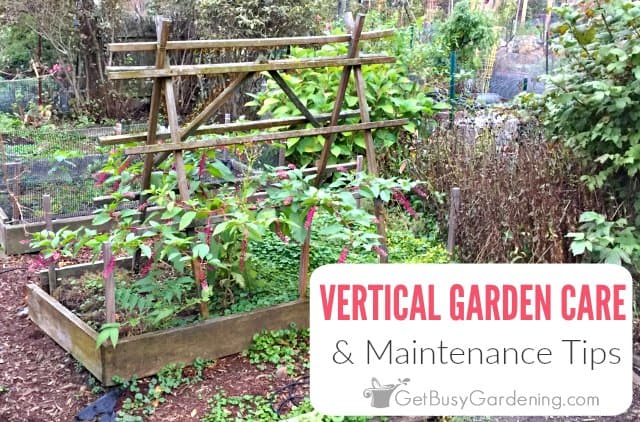
One of the biggest advantages of growing vertically is that it makes maintenance much simpler. Growing plants up and off the ground makes it easier to care for them, and protects them from many common problems.
Even though caring for vertical gardens is easier, they aren’t completely maintenance free. But don’t worry, there are lots of things you can do to ease the burden of vertical garden maintenance.
In this vertical garden care guide, I’ll show you how to take care of your vertical garden so that you don’t have to spend your entire summer weeding, watering, fertilizing, and fighting pests and disease.
What Kind Of Maintenance Is Required In Vertical Gardening?
We already know that one of the biggest benefits of vertical gardening is that it makes it much easier to maintain a healthy and productive garden. But what kind of vertical garden maintenance is actually required?
Well, the tasks you need to perform when caring for vertical gardens aren’t much different. You’ll still need to water, fertilize, prune, and harvest – those aren’t going away. But there are many simple shortcuts you can take in a vertical garden that make these tasks easier.
You’ll also still need to be aware of things like weeds, pests, and diseases. But many of these common problems can be controlled more effectively, or avoided all together when plants are grown off the ground.
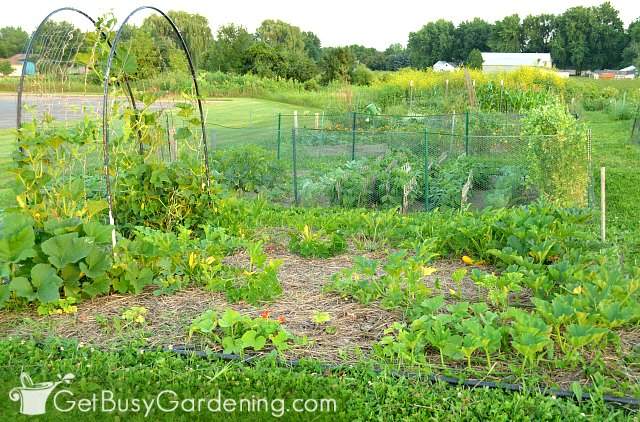
How To Maintain A Vertical Garden
Below I will discuss each of the most common vertical garden care and maintenance tasks, and give you tons of tips for making them as painless as possible.
Watering
Whether your vertical garden is growing in the ground, on the patio, or hanging on a wall, the same basic rules for watering apply. Believe it or not, there is a right way to water plants, and a wrong way. Here are some watering tips…
- Water at the base – Watering plants at the base rather than over the top will help prevent fungus and mildew growth. It also helps to reduce weeds in a vertical garden plot, because you’re watering the plants only, and not all of the weeds.
- Infrequent, deep waterings – It’s best to water your vertical garden less often, with deeper waterings than it is to water it a little bit every day. Watering deeply encourages the roots will grow deep, so the plants won’t need to be watered as often.
- Provide adequate drainage – Take special care that all of your vertical planters and hanging pots have drainage holes to prevent overwatering. Without adequate drainage, the soil will quickly become water logged, and the plants will drown.
- Mulch your garden – Mulching your garden has many benefits, and water retention is one of them. Mulch acts as an insulator so that the moisture won’t evaporate in the hot sun. You can add mulch over the soil of any type of vertical garden, including ones in containers.
- Use irrigation systems – Adding irrigation into your garden is huge lifesaver when it comes to watering. You could simply weave soaker hoses through your plot, or install drip irrigation. Once installed, plug your irrigation system into a digital hose timer to make watering a snap.
Training & Tying
Many types of vining plants are excellent climbers, and will quickly cover a trellis without any help from you. But some will need to be trained or tied to the support to grow vertically. Here are some vertical garden maintenance tips for training and tying plants…
- Training vines – For plants that have tendrils or twining stems, you can gently weave the vines into the trellis. Or you could tie them onto the structure until they grab on by themselves. Once the vines clasp the trellis, the ties can be removed and reused on new growth higher up on the support, if necessary.
- Tying long branches – Plants that have long, pliable branches will need to remain tied to the support to stay in place. To train these types of plants, gently press the stem against the support, and tie it on using twine, garden twist ties or flexible plant ties.
In either case, be sure to tie them very loosely, you don’t want the ties to strangle or cut into the vines as they grow thicker. If you’re concerned, you can use plant clips, which clip on very loosley to prevent damage. Learn all about how to train vines on a trellis here.
Weed Control
When you garden in containerized vertical structures like wall pockets, towers, or living art, the struggle of dealing with weeds basically becomes non-existent. But caring for vertical gardens growing in the ground, it’s a whole different ball game.
Weed control is one of the biggest struggles that gardeners face, and it can quickly become an overwhelming chore. But it doesn’t have to be so time consuming if you take a few simple steps to prevent weeds from growing in the first place…
- Mulch – A thick layer of mulch is the best way to prevent weeds from sprouting in your vertical garden. Growing vining crops on trellises and other structures allows you to easily mulch around the base of the plants. For best results, add a 3” to 4” layer over the top of the soil.
- Add a weed barrier – For an added barrier, lay cardboard or a thick layer of newspaper over the soil, and wet it down before piling on the mulch. This will smother existing weeds, giving you the upper hand. (I don’t recommend using weed fabric however. Weeds can still grow on top of it, and it’s very difficult to work with as your garden matures)
- Don’t water the weeds – Proper irrigation will also help to discourage weeds from growing. Watering the entire garden with an overhead sprinkler waters the weeds too. So instead, focus the water directly at the base of each of the plants.
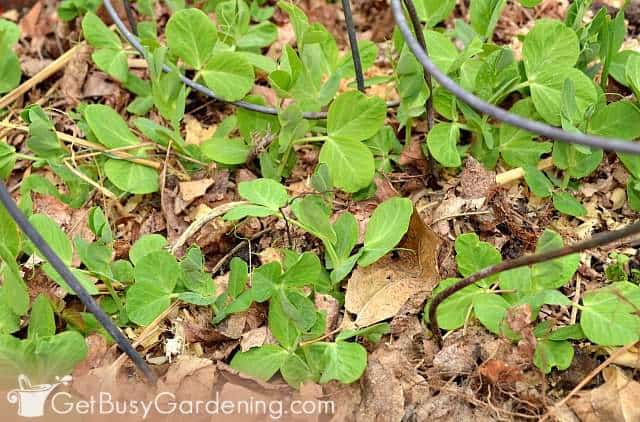
Fertilizing
Fertilizing is an important part of vertical garden maintenance. Many types of plants will perform their best when they’re fed regularly throughout the growing season.
This is especially important when caring for vertical gardens growing in pots or hanging containers (like living walls and hanging baskets). They solely rely on us to provide the nutrients they need to survive. Here are some tips for fertilizing any type of vertical garden…
- Avoid chemical fertilizers – When it comes to feeding any type of vertical garden, avoid using synthetic chemicals. Chemical fertilizers give us instant gratification, but cause major damage to the heath of the soil over time. It’s also much easier to burn the roots of plants with chemical fertilizers.
- Use organic fertilizer – When you use organic fertilizers, you’re building up the soil to be a rich source of nutrients for your plants. There are tons of natural fertilizers available these days. They can be applied as either a liquid (like compost tea or natural kelp-based fertilizer), or as slow release granules that you add to the soil.
Disease Control
Many disease issues start at the soil level, so vertical gardens tend to have less problems with soilborne diseases. However, at some point you will likely have to deal with some disease or fungus issues.
So, as you go about your regular vertical garden maintenance tasks, check for any signs of infection, like discoloration or spots on the leaves. That way, you can take swift action to get ahead of the problem before it spreads.
Here are tips for controlling fungus and disease issues in your vertical garden…
- Regular pruning – Pruning is one of the best ways to prevent disease and fungus issues. Regular pruning allows for adequate airflow, and keeps the leaves off the soil.
- Mulch – Mulching around the base of the plants in your vertical garden keeps soil from splashing up on the leaves. This helps prevent soilborne diseases from infecting your plants.
- Proper watering – Water plants in the morning so the leaves can dry out during the day. This will help to slow down, or even stop the spread of disease. If you must water your garden in the evening, take care to keep water off the leaves.
- Proper disposal – Never put diseased plants into your compost bin. Instead, toss the infected plant material into the trash, or burn it to destroy the disease pathogens.
- Fresh potting soil – Never reuse potting soil in your vertical containers or hanging gardens. It’s important to always use fresh, sterile soil when planting vertical gardens in any type of container or hanging planter.
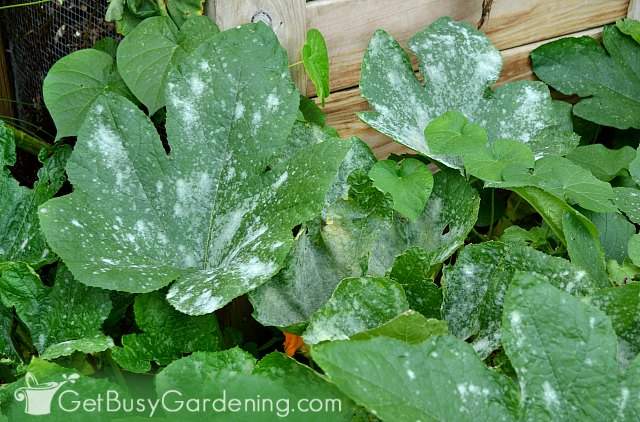
Pest Control
For better or worse, destructive bugs and furry pests are a part of gardening. But growing plants vertically makes controlling many of these pests much easier.
When it comes to furry pests, vertical gardens growing high above the ground are simply out of reach. And climbing plants growing in the ground can easily be protected. You can either encircle the base of vulnerable plants chicken wire or garden fencing, or build a fence around your entire plot.
Bugs however can be a bit more challenging part of vertical garden care. Here are some tips for controlling them…
- Use physical methods – Most types of insect pests can easily be controlled using physical methods. Try hand picking them, adding row covers, or simply knocking the pests off of the plant with a strong spray of water from the garden hose.
- Attract beneficial bugs – Many of the bugs in your garden, like wasps and spiders, are beneficial predators that feed on pest insects. So, plant extra flowers to attract these predatory insects, and help you with vertical garden maintenance.
- Avoid chemical pesticides – When the bad bugs are munching on your coveted plants, it’s tempting to reach for the nearest pesticide to kill them. But synthetic pesticides are not only bad for our health, they are also extremely toxic to the environment. Plus, they will kill the good bugs right along with the bad bugs.
- Use organic pesticides sparingly – Organic insecticides (like neem oil and diatomaceous earth) are a much better option. But even organic pesticides shouldn’t be the first thing you reach for when you discover a pest insect invasion in your vertical garden. Use them only when absolutely it’s necessary.
- Target only the pest insect – It’s important to use all types of pesticides, even organic ones, with extreme caution. Never do a broad application of any type of insecticide in your garden. Otherwise you may end up killing the good bugs in the process of trying to rid your garden of the destructive pests.
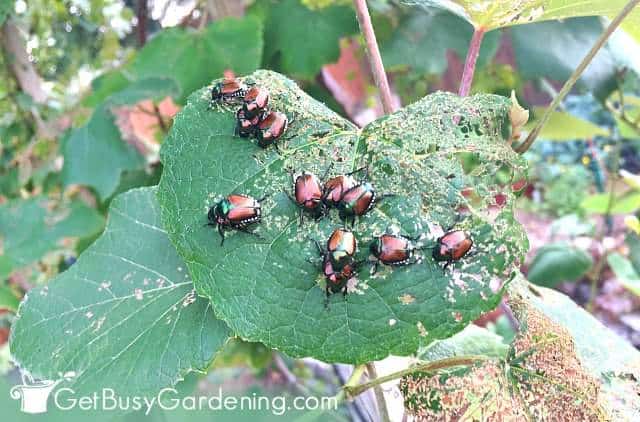
Pruning & Pinching
Many types of vertical garden plants will benefit from being pruned or pinched during the growing season. So it’s a good idea to get into the habit of pruning as part of your regular vertical garden maintenance routine.
Regular pruning and pinching helps to maintain healthy plants, controls their size, and keeps them looking their best. Here are a few quick tips…
- Deadhead flowers – Deadheading (pinching off the spent flowers) encourages new flowers on many types of plants.
- Prune regularly – Regular pruning improves air circulation, which prevents disease and fungus issues. Unruly vines can also be trimmed to control their size.
- Pinch to maintain shape – You can pinch bushy plants to keep them compact. Vining plants can be pinched or pruned to train them to grow over a wide structure, rather than continuing to grow taller and longer.
- Remove dead or diseased leaves – Check your vertical garden regularly, and trim off any dead or diseased leaves. This will help to control or even stop the spread of mildew and disease, and also keeps your garden looking it’s best.
- Sterilize your pruners – Be sure to disinfect your pruners by washing them with soapy water, or dipping them in rubbing alcohol after trimming off any diseased material. That way you won’t accidentally infect the other plants.
Winterizing
Most of the time, there’s isn’t any special vertical garden maintenance you’ll need to do in the fall. Most of the structures can just sit outside year round.
But if any of your vertical gardens are growing in portable containers, then there are a few things to think about…
- Store them inside – To extend the life of your portable vertical structures like picture frames, tower gardens, and hanging planters, store them in a shed or garage through the winter.
- Overwinter containerized perennials – If you’re growing perennial plants in any of your portable vertical gardens, move the containers into an unheated garage or shed. This will give them extra protection so they have a better chance of surviving the winter.
- Dump out the soil – Clean out your vertical planters in the fall to protect the container. Soil left in the pot over the winter expands when it freezes, which can cause delicate containers to break or crack.
Harvesting
If you’re growing vegetables vertically, then you get the added bonus of enjoying the bounty of your harvest. Here are some quick harvesting tips to add to your regular vertical garden maintenance schedule…
- Harvest often – Harvesting regularly gives the plant the energy to produce more food. So, once the plants are mature, check them daily for new vegetables that are ready to harvest. The more you harvest, the more food you will get.
- Bigger is not always better – Some crops will become tough or seedy when left on the vine too long. So harvest your veggies as soon as they mature to ensure you get the best taste, and tenderest fruit.
- Remove damaged fruit – Damaged vegetables should be harvested immediately, and either discarded (if diseased or rotted), or eaten within a day or two.
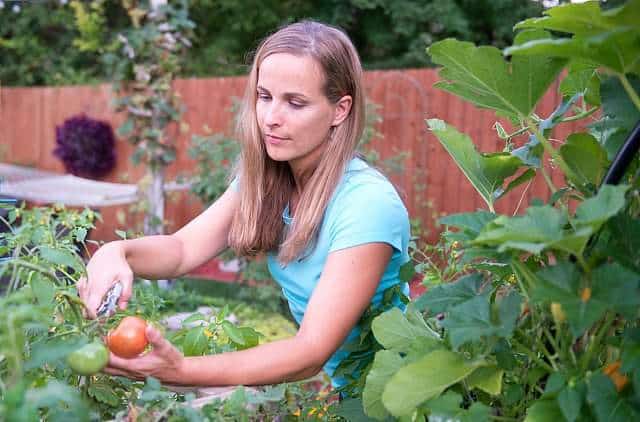
Caring for vertical gardens is much easier than with a traditional garden plot, but not totally hands-off. Follow these vertical garden maintenance tips, and you won’t have to waste your summer lugging watering cans, pulling pesky weeds, or fighting pests and disease!
If you’d like to learn how to make the most of your space and get as much homegrown food as possible, then my Vertical Vegetables book is perfect! It will teach you all you need to know, has tons of gorgeous photos, and includes 23 DIY projects you can build for your own garden. Order your copy today!
Learn more about my Vertical Vegetables book here.
More About Vertical Gardening
- 15 Types Of Vertical Gardening Systems & Supports
- Choosing Materials To Use For Vertical Gardening
- Building A Vertical Garden: DIY Tips For Beginners
- 15 Fabulous Vertical Gardening Ideas & Designs
Share your vertical garden maintenance and care tips in the comments below!
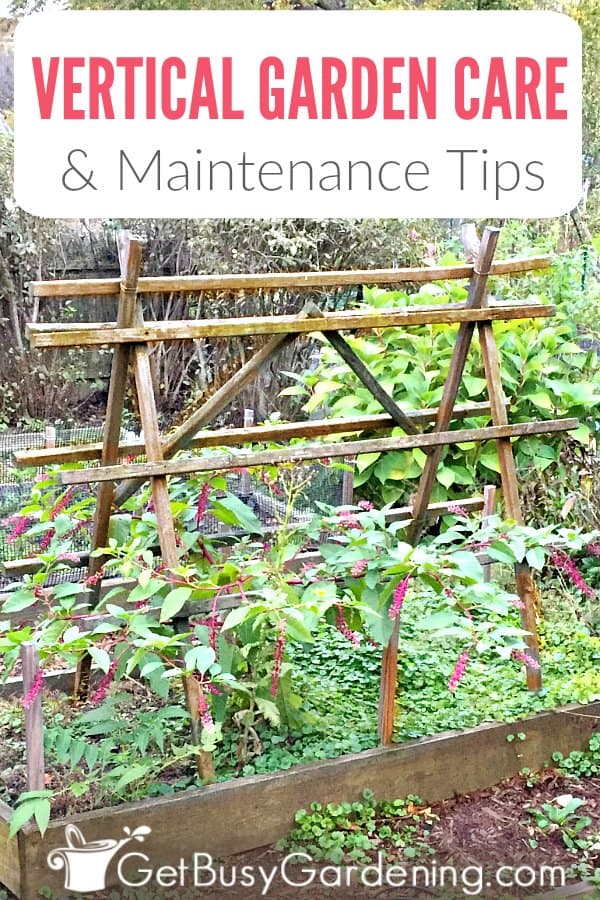
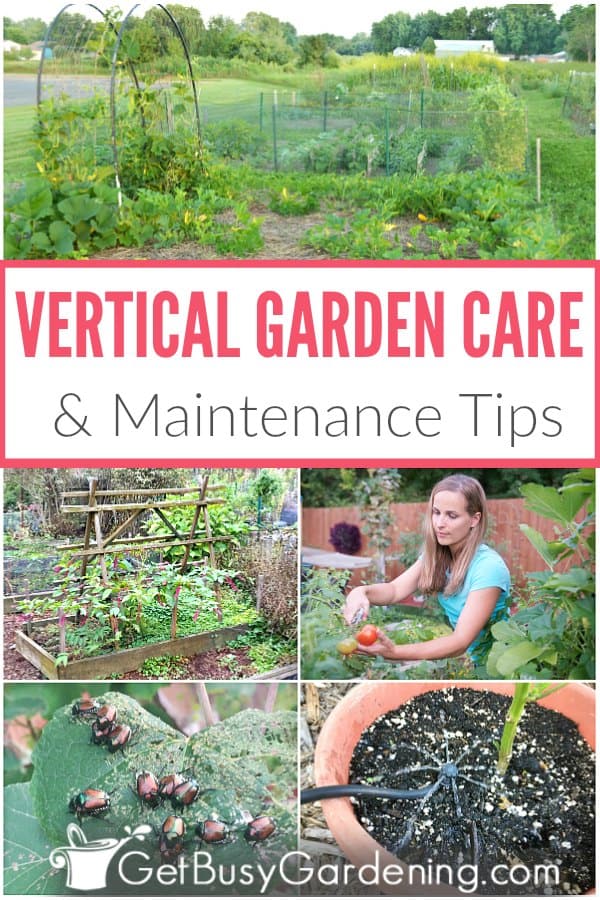


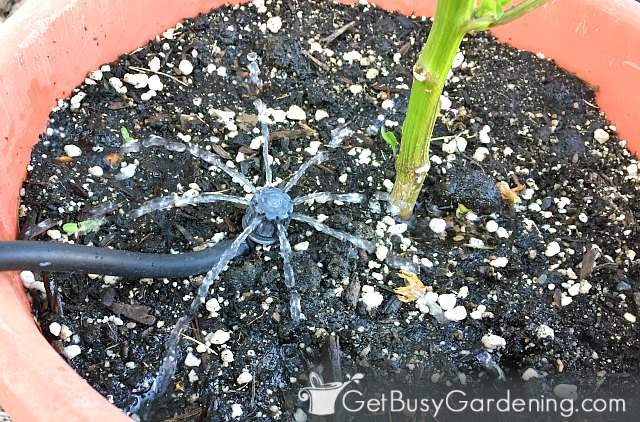
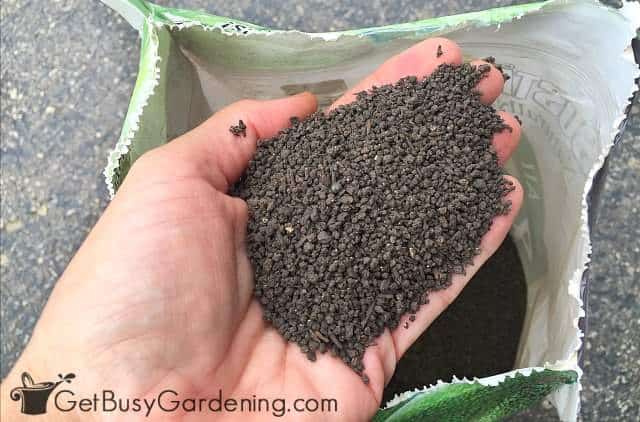


Leave a Reply